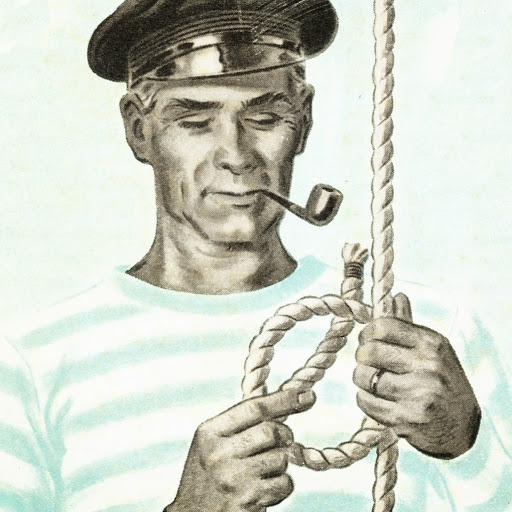John L Sherry
age ~70
from Belmont, MA
- Also known as:
-
- Jackie Sherry
- Jay L Sherry
- Jacqueline Sherry
- Kathy Sherry
- Meghan Sherry
- Sherry L John
John Sherry Phones & Addresses
- Belmont, MA
- Newtown, CT
- 18 Pine Needle Rd, Wayland, MA 01778 • 508 655-9140
- Cambridge, MA
- Rochester, NY
- 18 Pine Needle Rd, Wayland, MA 01778 • 508 524-6732
Work
-
Company:Pegasystems inc.
-
Address:101 Main St Ste 172, Cambridge, MA 02142
-
Phones:617 374-9600
-
Position:Vice president business process management and solution marketing
-
Industries:Computer Related Services
Education
-
Degree:Associate degree or higher
Ranks
-
Licence:Illinois - Active And Authorized To Practice Law
-
Date:2009
Us Patents
-
Expandable Micro-Catheter
view source -
US Patent:6358238, Mar 19, 2002
-
Filed:Sep 2, 1999
-
Appl. No.:09/388565
-
Inventors:John Sherry - Needham MA
-
Assignee:SciMed Life Systems, Inc. - Maple Grove MN
-
International Classification:A61M 2500
-
US Classification:604524
-
Abstract:A catheter and method for delivering a therapeutic agent (e. g. , an embolic material) to a vascular site. The intravascular catheter is navigated, at a first relatively small diameter, to the vascular site. Pressure is applied to the lumen of the shaft, thereby expanding an expandable portion of the catheter shaft from the first diameter to a second larger diameter, suitable for delivery of a therapeutic agent. The therapeutic agent is preferably disposed in the lumen of the shaft such that the expansion pressure is created, in part, by resistance of the therapeutic agent to flow through the lumen. Preferably, the shaft expands predictably with pressure. A reinforcement structure may be utilized in the shaft of the catheter, including the expandable portion. The reinforcement structure may include a plurality of circumferential elements, each circumferential element having a circumference and a means for permitting an increase in the circumference such that the shaft is able to expand.
-
Implantable Vascular Access Device
view source -
US Patent:6540717, Apr 1, 2003
-
Filed:Sep 20, 2001
-
Appl. No.:09/957619
-
Inventors:John Sherry - Needham MA
-
Assignee:Scimed Life Systems, Inc. - Maple Grove MN
-
International Classification:A61M 1100
-
US Classification:604 9301
-
Abstract:An implantable vascular access device includes a housing having an inlet, an outlet, an interior chamber defined therein and a valve positioned between the inlet and the interior chamber. The valve is subcutaneously manipulated between an open position, in which fluid can flow between the inlet and the interior chamber, and a closed position in which the valve occludes the inlet. The device may include any combination of multiple inlets, outlets and/or interior chambers. In the preferred embodiment, the housing includes two separate interior chambers suitable for the inflow and outflow of a typical hemodialysis procedure. A method for accessing a vascular structure is provided which includes the steps of subcutaneously implanting the device connecting one end of a cannula to the outlet of the device and another end of the cannula to a selected vascular structure. The valve of the device is manipulated to permit fluid communication between the inlet of the device and the selected vascular structure. A needle is introduced through the inlet opening to access the selected vascular structure.
-
Method For Thermal Treatment Of Type Ii Endoleaks In Arterial Aneurysms
view source -
US Patent:6748953, Jun 15, 2004
-
Filed:Jun 11, 2002
-
Appl. No.:10/170043
-
Inventors:John Sherry - Needham MA
David J. Sauvageau - Methuen MA -
Assignee:SciMed Life Systems, Inc. - Maple Grove MN
-
International Classification:A61B 1900
-
US Classification:128898, 606 28, 606 49
-
Abstract:A method and apparatus that facilitates the prevention of type II endoleaks in stent-graft treated arterial aneurysmal sacs comprising a catheter having an elongate tubular body with a balloon or wire mesh basket attached to the body adjacent its distal end. The balloon preferably comprising a plurality of energy conducting elements attached thereto for transmitting RF energy to tissue to be treated. In operation, the catheter is inserted into the femoral artery of a patient and then advanced through the femoral artery into the aorta until the balloon or basket is positioned within an aneurysmal sac. Once in place, the balloon or basket is expanded to compress the clot material within the aneurysmal sack under a pressure in the range of about 2-5 atmospheres. While compressed, the clot material is then heated by transmitting RF energy to the wire basket or the conducting elements on the balloon until the clot material is cauterized and collateral blood flow channels in the clot material are occluded. The balloon or basket is then returned to an unexpanded state and the catheter is removed from the aorta.
-
Tubular Prosthesis For External Agent Delivery
view source -
US Patent:7033389, Apr 25, 2006
-
Filed:Oct 16, 2001
-
Appl. No.:09/978988
-
Inventors:John E. Sherry - Needham MA, US
-
Assignee:SciMed Life Systems, Inc. - Maple Grove MN
-
International Classification:A61F 2/06
-
US Classification:623 142, 623 113
-
Abstract:A tubular prosthesis, which may be an endovascular prothesis, is provided which includes a tubular member (stent or stent/graft combination) and an outer covering having portions sealed to the tubular member. The tubular member is impervious to a pre-determined fluid, particularly an occluding fluid, while the outer cover is pervious to the pre-determined fluid. In one aspect of the present invention, the implantation of the prosthesis allows for occluding fluid to weep from the prosthesis and into a sac of an aneurysm to cause occlusion thereof without introducing the occluding fluid into the blood stream. In this manner, a Type II failure of the prosthesis may be avoided. In other aspects of the invention, therapeutic agents may be delivered and/or a seal may be formed about the prosthesis to prevent a Type I failure.
-
Aortic Artery Aneurysm Endovascular Prosthesis
view source -
US Patent:7192441, Mar 20, 2007
-
Filed:Oct 16, 2001
-
Appl. No.:09/978383
-
Inventors:John E. Sherry - Needham MA, US
-
Assignee:Scimed Life Systems, Inc. - Maple Grove MN
-
International Classification:A61F 2/06
-
US Classification:623 124, 623 125
-
Abstract:A tubular prosthesis is provided which includes a tubular member and an outer covering sealed to portions of the tubular member, with a pocket being defined therebetween. A filling agent, preferably a substantially incompressible agent, is disposed in the pocket so as to cause portions of the outer covering to expand from the tubular member. As an endovascular prosthesis, the filled pocket can be used as a seal against the wall of a blood vessel to prevent Type I endoleaks.
-
Implantable Vascular Access Device
view source -
US Patent:7252649, Aug 7, 2007
-
Filed:Jan 15, 2003
-
Appl. No.:10/342913
-
Inventors:John Sherry - Needham MA, US
-
Assignee:Boston Scientific Scimed, Inc. - Maple Grove MN
-
International Classification:A61M 31/00
-
US Classification:604 9301, 604 30, 604 33, 60428801, 60428803, 60428804
-
Abstract:An implantable vascular access device includes a housing having an inlet, an outlet, an interior chamber defined therein and a valve positioned between the inlet and the interior chamber. The valve is subcutaneously manipulated between an open position, in which fluid can flow between the inlet and the interior chamber, and a closed position in which the valve occludes the inlet. The device may include any combination of multiple inlets, outlets and/or interior chambers. In the preferred embodiment, the housing includes two separate interior chambers suitable for the inflow and outflow of a typical hemodialysis procedure. A method for accessing a vascular structure is provided which includes the steps of subcutaneously implanting the device connecting one end of a cannula to the outlet of the device and another end of the cannula to a selected vascular structure. The valve of the device is manipulated to permit fluid communication between the inlet of the device and the selected vascular structure. A needle is introduced through the inlet opening to access the selected vascular structure.
-
Low Profile Stent-Graft Attachment
view source -
US Patent:7641681, Jan 5, 2010
-
Filed:Dec 28, 2004
-
Appl. No.:11/025826
-
Inventors:John Sherry - Needham MA, US
Fergus Quigley - Waltham MA, US -
Assignee:Boston Scientific Scimed, Inc. - Maple Grove MN
-
International Classification:A61F 2/06
-
US Classification:623 113, 623 132, 623 144
-
Abstract:A low profile, implantable prosthesis includes (a) a tubular graft including opposed open ends and having yarns in a textile pattern to define a textile wall having a luminal surface and an exterior surface; and (b) a tubular, radially extensible member including a portion arranged in a closed zig-zag pattern, the pattern having a series of angled bends at proximal and distal ends thereof, and longitudinally extending members having opposed proximal and distal ends, the distal ends being disposed from the angled bends of the proximal end; the longitudinally extending members having a plurality of detents for securing the yarns within the textile pattern at one of the opposed open ends, wherein the yarns of the textile patterns are securably disposed to the detents. The detents may be holes, inwardly extending notches, outwardly extending protuberances, or combinations thereof in the longitudinally extending members. The textile pattern of the graft may be a braided textile pattern, a woven textile pattern, a knitted textile pattern, and combinations thereof.
-
Implantable Vascular Access Device
view source -
US Patent:7806876, Oct 5, 2010
-
Filed:May 15, 2007
-
Appl. No.:11/748749
-
Inventors:John Sherry - Needham MA, US
-
Assignee:Navilyst Medical, Inc. - Marlborough MA
-
International Classification:A61M 37/00
-
US Classification:60428803, 60428801, 60428804
-
Abstract:An implantable vascular access device includes a housing having an inlet, an outlet, an interior chamber defined therein and a valve positioned between the inlet and the interior chamber. The valve is subcutaneously manipulated between an open position, in which fluid can flow between the inlet and the interior chamber, and a closed position in which the valve occludes the inlet. The device may include any combination of multiple inlets, outlets and/or interior chambers. In the preferred embodiment, the housing includes two separate interior chambers suitable for the inflow and outflow of a typical hemodialysis procedure. A method for accessing a vascular structure is provided which includes the steps of subcutaneously implanting the device connecting one end of a cannula to the outlet of the device and another end of the cannula to a selected vascular structure. The valve of the device is manipulated to permit fluid communication between the inlet of the device and the selected vascular structure. A needle is introduced through the inlet opening to access the selected vascular structure.
Lawyers & Attorneys

John Patrick Sherry - Lawyer
view sourceLicenses:
Illinois - Active And Authorized To Practice Law 2009

John Sherry - Lawyer
view sourceISLN:
903773063
Admitted:
1971
University:
University of Maine, B.S.
Law School:
George Washington University, J.D.
Medicine Doctors

John Ernest Sherry
view sourceSpecialties:
Anesthesiology
Pain Medicine
Pain Medicine
Interventional Pain Medicine
Pain Medicine
Pain Medicine
Interventional Pain Medicine
Education:
State University of New York Downstate (1991)
Isbn (Books And Publications)
-
Contemporary Marketing And Consumer Behavior: An Anthropological Sourcebook
view source -
Author:John F. Sherry
-
ISBN #:0803957521
-
Time, Space And The Market: Retroscapes Rising
view source -
Author:John F. Sherry
-
ISBN #:0765610124
-
Time, Space, And The Market: Retroscapes Rising
view source -
Author:John F. Sherry
-
ISBN #:0765610132
-
Advances In Consumer Research: Diversity In Consumer Behavior
view source -
Author:John F. Sherry
-
ISBN #:0915552280
-
The Laws Of Innkeepers: For Hotels, Motels
view source -
Author:John Sherry
-
ISBN #:0801414733
-
Servicescapes: The Concept Of Place In Contemporary Markets
view source -
Author:John Sherry
-
ISBN #:0844230057
-
Maggie'S Farm
view source -
Author:John Sherry
-
ISBN #:0932966500
-
Maggie'S Farm
view source -
Author:John Sherry
-
ISBN #:0932966683
License Records
John J Sherry
Phone:
772 485-5230
License #:
6334 - Active
Category:
Health Care
Issued Date:
Jul 1, 1984
Effective Date:
Oct 30, 2016
Expiration Date:
Dec 1, 2018
Type:
Paramedic
Name / Title
Company / Classification
Phones & Addresses
Vice President Business Process Management And Solution Marketing
Pegasystems Inc.
Computer Related Services
Computer Related Services
101 Main St Ste 172, Cambridge, MA 02142
Senior Systems Administrator
Paychex, Inc.
Accounting, Auditing, and Bookkeeping Services
Accounting, Auditing, and Bookkeeping Services
675 Basket Rd, Webster, NY 14580
Senior Systems Administrator
Paychex, Inc
Accounting/Auditing/Bookkeeping · Accountant
Accounting/Auditing/Bookkeeping · Accountant
675 Basket Rd, Webster, NY 14580
585 216-0823, 585 216-6206, 585 216-0820, 585 216-0550
585 216-0823, 585 216-6206, 585 216-0820, 585 216-0550
Principal
Mattress Warehouse
Ret Furniture · Ret Misc Merchandise
Ret Furniture · Ret Misc Merchandise
President, Chief Executive Officer, Manager, Director, Presshareholder
Capasso Farms Inc
Ret Fruit & Vegetables Gourmet Foods & Beer & Wine
Ret Fruit & Vegetables Gourmet Foods & Beer & Wine
91 Newton St, Southborough, MA 01772
508 485-5467
508 485-5467
President
J. R. SHERRY ASSOCIATES, INC
5 Grant St, Bridgeport, CT 06610
65 Ridgefield Ave, Bridgeport, CT
65 Ridgefield Ave, Bridgeport, CT
Resumes

John Sherry
view source
John Sherry
view source
John Sherry
view source
John Sherry
view sourceLocation:
United States

John Sherry
view sourceLocation:
United States

John Sherry
view source
Paddy John Sherry
view source
John Mc Sherry
view source
John Sherry
view source
John Sherry
view source
John Sherry Skufca
view source
Sherry John
view source
John Mc Sherry
view sourceYoutube
Myspace

John Sherry
view sourceNews

Obsessions: Crying at the movies
view source- While movies might not actually make viewers feel better, they do "allow us to experience strong emotions in safe places," said John Sherry, an associate professor specializing in mass media effects at Michigan State University.
- Date: Feb 10, 2012
- Category: Entertainment
- Source: Google
Classmates

John Sherry
view sourceSchools:
Bishop Gallagher High School Harper Woods MI 1976-1980
Community:
Roger Dube

John Sherry
view sourceSchools:
Punxsutawney Area High School Punxsutawney PA 1963-1967

John Sherry
view sourceSchools:
Loretto Catholic Central High School Sault Ste. Marie MI 1963-1967
Community:
Heather Thomas, Mary Johnston

John Sherry
view sourceSchools:
BaldwinWhitehall Baldwin PA 1960-1964
Community:
Rex Benincasa, Eric Peterson

John Sherry
view sourceSchools:
Max S. Hayes Vocational High School Cleveland OH 1972-1976
Community:
Kenneth Ackley

John Sherry
view sourceSchools:
Manteno High School Manteno IL 2003-2007
Community:
Steven Privratsky, Daniel Armin, Katie Eckberg, Jim Ellingham

John Sherry
view sourceSchools:
Campbell Elementary School Muskegon MI 1971-1976, Plum Grove Junior High School Rolling Meadows IL 1976-1978
Community:
Eileen Bell, Katherine Kay, Brian Welsh
Plaxo

John Sherry
view sourceOklahoma City OklahomaOwner at Double Clean Carpets

John Sherry
view sourceSr. Loan Officer at The Mortgage Network

Sherry John
view sourceLos Angeles

John Sherry
view sourceRowan University
Flickr
Googleplus

John Sherry
Work:
Me - Sports Motivator (2011)
Me - Life Coach (2005-2011)
Me - Life Coach (2005-2011)
Education:
Cardinal Newman, Coventry, UK - Sports
About:
I'm John Sherry the Sports Motivator I was once a 'little fat kid' with a sports dream that nobody would believe in or support me from teachers to parents, friends to coaches. So, I motiva...
Tagline:
I'm a Sports Motivator helping all sports people make their dreams come true

John Sherry

John Sherry

John Sherry

John Sherry

John Sherry

John Sherry

John Sherry
Get Report for John L Sherry from Belmont, MA, age ~70













